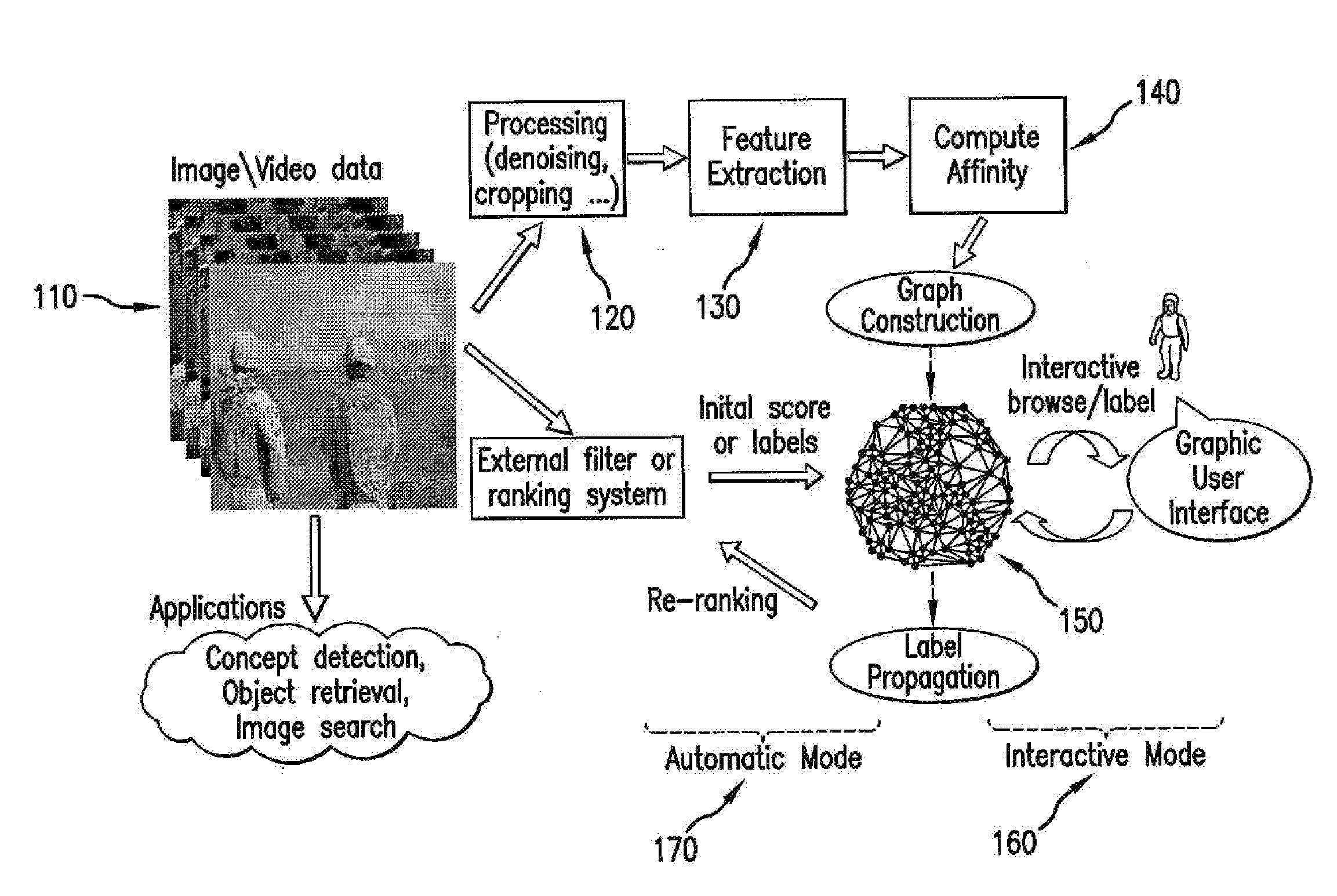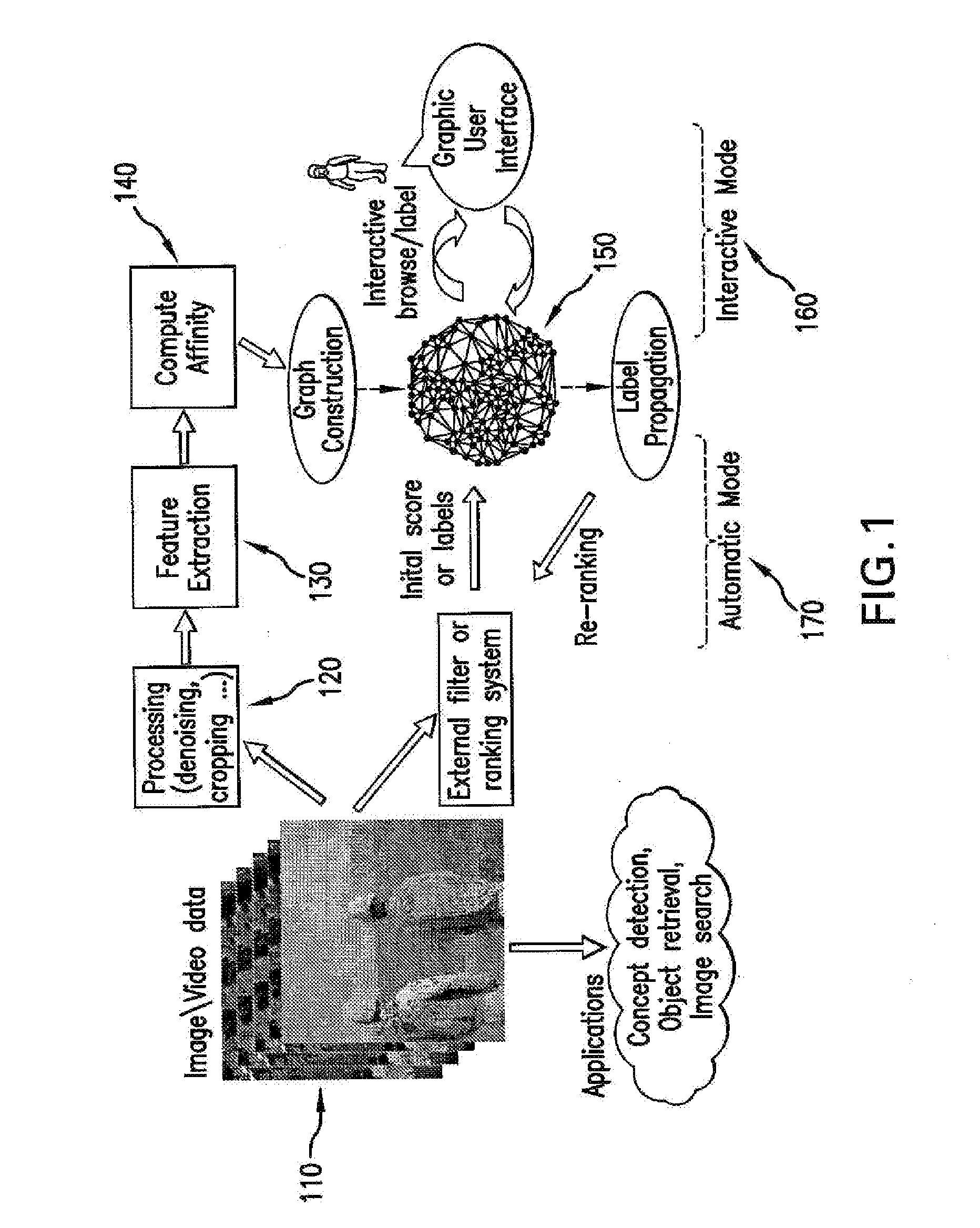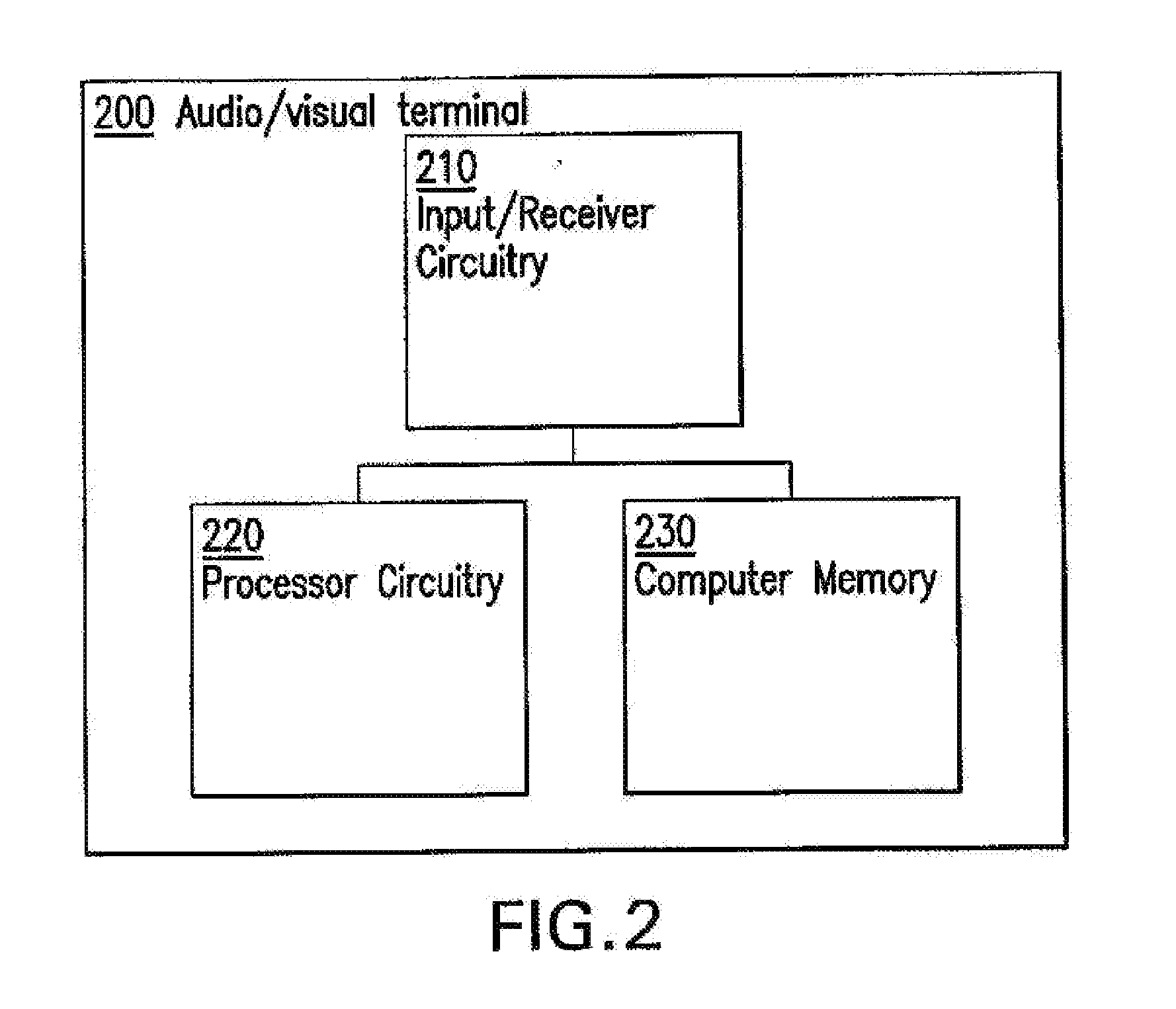System And Method For Annotating And Searching Media
a technology of applied in the field of system and method for annotating and searching media, can solve the problems of insufficient effectiveness of prior methods and systems, insufficient effectiveness of addressing the problems associated with large multimedia collections, and insufficient effectiveness of applications in the practical domain using prior methods and systems
- Summary
- Abstract
- Description
- Claims
- Application Information
AI Technical Summary
Benefits of technology
Problems solved by technology
Method used
Image
Examples
Embodiment Construction
[0026]Transductive annotation by graph (“TAG”) systems and methods as disclosed herein can be used to overcome the labeling and classification deficiencies of prior systems and methods described above. FIG. 1 illustrates a TAG system and various exemplary usage modes in accordance with the presently disclosed subject matter.
[0027]Given a collection of multimedia files, the TAG system of FIG. 1 can be used to build an affinity graph to capture the relationship among individual images, video, or other multimedia data. The affinity between multimedia files may be represented as, for example: a continuous valued similarity measurement or logic associations (e.g., relevance or irrelevance) to a query target, or other constraints (e.g., images taken at the same location). The graph can also be used to propagate information from labeled data to unlabeled data in the same collection.
[0028]As illustrated in FIG. 1, each node in the graph 150 may represent a basic entity (data sample) for ret...
PUM
 Login to View More
Login to View More Abstract
Description
Claims
Application Information
 Login to View More
Login to View More - R&D
- Intellectual Property
- Life Sciences
- Materials
- Tech Scout
- Unparalleled Data Quality
- Higher Quality Content
- 60% Fewer Hallucinations
Browse by: Latest US Patents, China's latest patents, Technical Efficacy Thesaurus, Application Domain, Technology Topic, Popular Technical Reports.
© 2025 PatSnap. All rights reserved.Legal|Privacy policy|Modern Slavery Act Transparency Statement|Sitemap|About US| Contact US: help@patsnap.com



